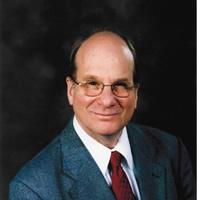
2012 Bower Science Award Theme: Nanochemistry
For most people, the word "chemistry" conjures up images of test tubes and Bunsen burners, odoriferous liquids bubbling in flasks over open flames, or perhaps huge industrial plants comprising a maze of pipes and tanks and smokestacks. But as we progress into the 21st century, the frontiers of physical chemistry are increasingly found not in Pyrex glassware on a lab bench, but at an almost unimaginably smaller scale: the nanoscale, where atoms and molecules operate at the basic level. For more than three decades, Louis E. Brus has been pioneering the exploration of this new realm, and taking a lead role in the birth of a new discipline: nanochemistry.
Brus is best known for discovering colloidal quantum dots, which are semiconductor nanocrystals with unusual electronic and physical properties that make them useful for applications ranging from microelectronics and optical devices to quantum computing and even biology. Ultimately, they may make possible the creation of single-electron transistors, leading to ever smaller and more powerful electronic devices. He was the first to study and characterize quantum dots in detail and to recognize their vast potential. But this represents only one of the many successes in an unconventional scientific career that has blended chemistry and physics in ways that have opened up wholly new areas of research and discovery.
Originally from Cleveland, Ohio, Brus moved throughout the Midwest with his family as a child, and found his scientific calling while in high school in Kansas, taking an intense interest in his chemistry and physics courses. Working at a hardware store after school, he also discovered an affinity for working with tools and machines, something which would serve him well in his later experimental work as a scientist. He enrolled at Rice University in 1961, the first year the university offered a major in chemical physics, which he eagerly embraced. Yet he wasn't actually thinking about a scientific career. He was attending Rice on a Naval Reserve ROTC scholarship, spending his summers as a midshipman training at sea, and assumed that after he graduated and completed his naval service, he would go into business like his father, an insurance salesman.
Despite this tidy plan, Brus' passion for science only intensified, and upon graduation he was permitted to continue on to graduate school instead of going immediately into active service. He proceeded to earn his doctorate at Columbia University in just four years, then returned to the Navy in a position as a scientific officer at the Naval Research Laboratory (NRL) in Washington, D.C. The work he did at NRL helped set the course of his later career, as he worked with lasers and their application to solid state physics.
In 1973, Brus was discharged from the Navy and went to work for the world-famous Bell Labs, where among many other things, the transistor and laser had been invented. Bell Labs was especially noted for its support for pure research, a place where a scientist was free to explore anything. "It was the best place to do physical science research," Brus wrote in an autobiography. "I never wrote a research proposal or a budget; new ideas were discussed informally with management, and then we just went ahead."
It was at Bell that Brus did the work that led to his quantum dot discoveries. Experimenting in photochemistry and short-pulse Raman laser spectroscopy, Brus found that certain semiconductor nanocrystals had a band gap (the difference between different electron energy levels, and upon which semiconductor function depends) larger than that of bulk crystals, and that the band gap was a function of the crystal size. In effect, a nanocrystal can display the properties both of bulk crystal and a single molecule. Brus was able to synthesize other nanocrystal structures with similar properties, basically developing the technique for building bulk semiconductors from the "ground up" at the nanolevel.
When Bell Labs became Lucent in the 1990s and the company began changing direction, Brus decided to move on into a new world: academia. Having spent his entire career thus far in private industry, he found it a somewhat difficult transition at first, since he'd never done any of the usual academic tasks such as teaching or scrambling for research grants. But he met the challenges of his new role with the same energy and creativity he brought to his scientific work, and is currently the S.L. Mitchell Professor of Chemistry at Columbia University. Along with teaching both undergraduate and graduate courses, Brus continues his groundbreaking research in nanoscience, using new techniques of microscopy and Raman spectroscopy to study and characterize the structure of nanocrystals and carbon nanotubes.
Widely recognized as an innovator and master experimental scientist, Louis Brus has published more than 230 scientific articles and received prizes for his work from the American Physical Society, the American Chemical Society, the Kavli Foundation, and many others. Such varied recognition of his contributions to chemistry, physics, and nanoscience provides a powerful testament to the wide-ranging importance and interdisciplinary nature of his work—and the promise of even greater accomplishments yet to come.
Information as of April 2012

